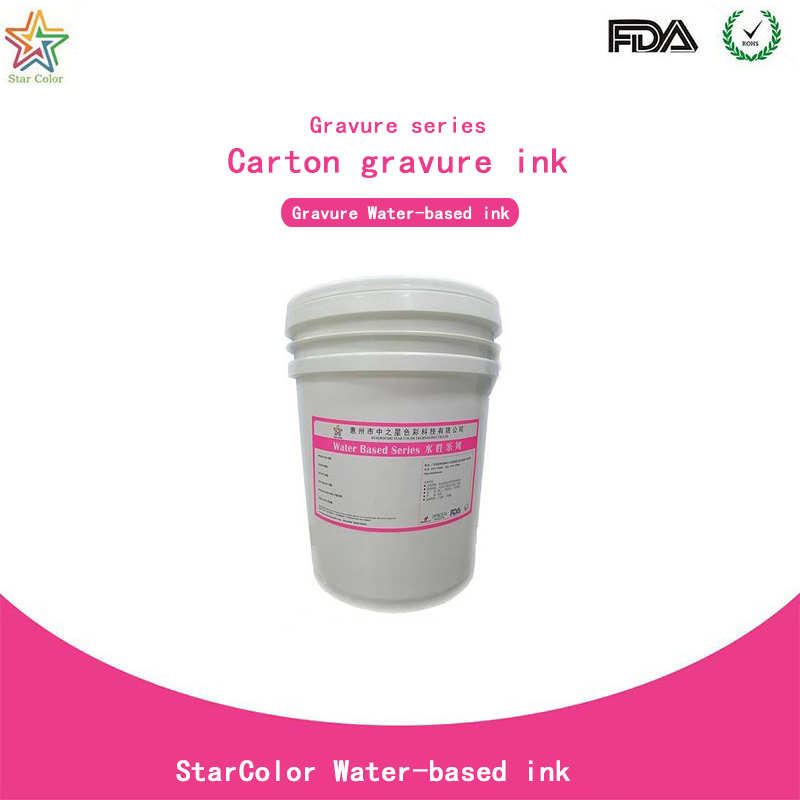I. Introduction
Amid the growing emphasis on environmental protection, water-based inks have garnered significant attention and application in the printing industry due to their low toxicity, odorlessness, and eco-friendly properties. However, during actual production processes, printers often encounter issues with poor drying of water-based inks. This not only affects the quality and appearance of printed materials but also reduces production efficiency and increases costs. Therefore, exploring the reasons for and solutions to poor drying of water-based inks during printing holds immense practical significance.
II. Analysis of Reasons for Poor Drying of Water-Based Ink During Printing
Ink-Related Issues
Firstly, the viscosity of water-based ink is a crucial factor. If it's too high, the ink's flowability on the printing surface becomes poor, making it difficult to distribute evenly, which subsequently impacts drying speed and printing quality. Secondly, the water content in the ink plays a significant role. If it's too high, the ink's volatility decreases, leading to longer drying times. Finally, the drier in the ink ensures its drying speed. If it's insufficient or ineffective, it significantly impairs the ink's drying performance.
Printing Process Issues
During the printing process, factors like printing speed, pressure, and environmental humidity can all influence the drying of water-based ink. If the printing speed is too fast, the ink doesn't have enough time to dry on the printing surface, leading to drying issues. Inadequate printing pressure reduces the contact area between the ink and the substrate, diminishing the ink's permeability and adhesion, thus affecting drying speed. Furthermore, the humidity of the printing environment is a key factor. In high humidity environments, moisture in the air can impact the volatility of water-based ink, slowing down its drying speed.

III. Discussion of Solutions to Poor Drying of Water-Based Ink During Printing
Based on the aforementioned reasons, the following solutions can be explored to address the issue of poor drying of water-based ink during printing.
Adjusting Ink Properties
Firstly, selecting an appropriate viscosity of water-based ink based on printing requirements and substrate characteristics is essential. This ensures good flowability on the printing surface, thereby enhancing printing quality and drying speed. Secondly, strictly controlling the water content in the ink through enhanced production process management and using efficient ink drying equipment is crucial. Lastly, regularly inspecting and replacing ineffective driers ensures their consistent effectiveness in the ink.
Optimizing Printing Process
Adjusting the printing speed and pressure based on actual conditions can be beneficial. Reducing the printing speed or increasing the printing pressure allows the ink to spend more time on the printing surface, enabling better penetration and adhesion, leading to improved drying. Controlling the humidity of the printing environment is also a crucial aspect of addressing drying issues. In high humidity environments, taking dehumidification measures or using dedicated humidity control equipment can lower humidity levels, thereby enhancing the drying speed of water-based ink.
IV. Conclusion and Outlook
Addressing the issue of poor drying of water-based ink during printing requires a multifaceted approach, encompassing ink properties adjustments and printing process optimization. Continuous exploration and experimentation are needed in both areas to find the most effective solutions. Moving forward, with the advancement of technology and the continuous development of the printing industry, more efficient and effective solutions are expected to emerge, providing robust support for the widespread application of water-based ink in the printing industry. Simultaneously, it's encouraging for printing manufacturers to actively adopt new technologies and processes, improve printing quality and production efficiency, and make a positive contribution to promoting the growth of environmentally friendly printing.